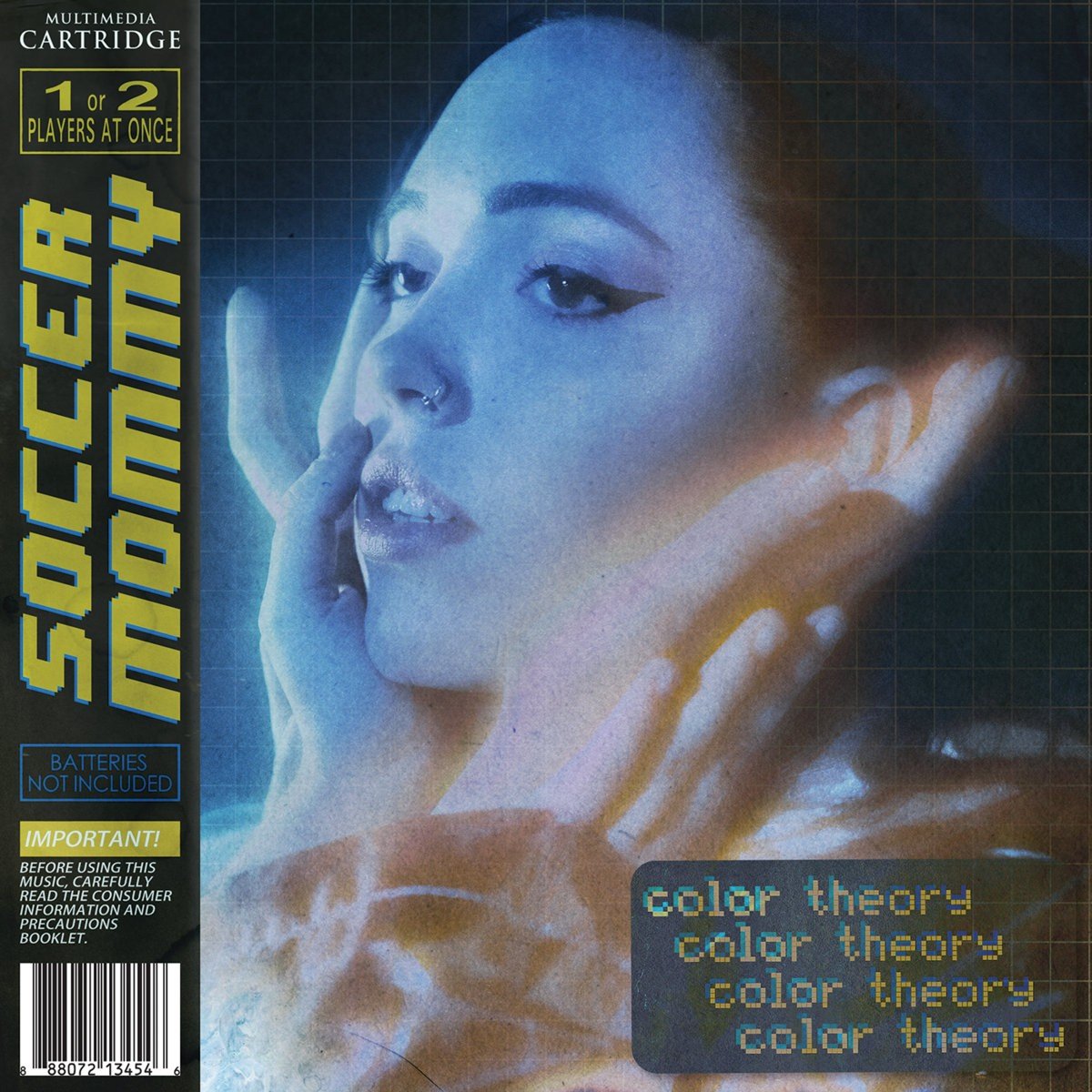The Robust Collaborations And Layered Histories Of ‘Heavy Light’
We Talked To U.S. Girls’ Meg Remy About The Making Of Her New Album
Meg Remy has been thinking a lot about the past, both on a micro and macro scale. Between now and her last U.S. Girls record, 2018’s In A Poem Unlimited, she began going to therapy to work through personal experiences from throughout her life. She’s been reading a lot of history to help her better understand the current events of today, and to consciously deflect the “fascist techniques” that the mainstream news media uses to influence its viewers.
“I just think that hindsight is a tool that should constantly remain sharp,” she tells Vinyl Me, Please.
She’s also been thinking a lot about her own artistic history. Remy started U.S. Girls in 2007 and carried it out as a solo project for about a decade, collaborating with other musicians and studio personnel for her recordings, but mostly performing live by herself. Things changed dramatically for In A Poem Unlimited, as Remy brought a 20-person team of session musicians onto the record and then played the songs live with an eight-person ensemble. U.S. Girls shows went from Remy in the spotlight to an explosive jamboree of wild guitar solos, robust background vocals, a blaring saxophone and a hypnotic rhythm section.
It was suddenly not just a solo endeavor but a fully-fledged band, and Remy wanted to bring that live sensibility onto her new record, Heavy Light. Whereas a Poem song like “Time” sounds freewheeling and loose, that album was actually tracked with nine people over three days and then tinkered with for months; all of the overdubs, background vocals, vocal production and many of the auxiliary instruments were recorded separately.
“It was a really touched record,” Remy says. “I knew I didn’t want to do that again; I really wanted to make an album where everything was recorded as-is. . .For this we actually had 15 people tracking at once. We did the recording of the record in eight days, so everything that is on that record was done in eight days by those people.”
While pushing her sound forward in that regard, she also wanted to call back to the early days of the project. The songs “Overtime,” “State House,” and “Red Ford Radio” are actually re-worked renditions of older U.S. Girls tracks, and one of the co-writers Remy worked with was her longtime friend Basia Bulat, with whom she always wanted to collaborate. The subject matter deals a lot with Remy’s childhood and contains myriad reflections on aging as it pertains to her life. But it begins with the fiery disco stomper “4 American Dollars,” a song that humorously rejects the very idea of currency in the face of a failing economy and a burning planet. It’s not a rumination on existing history but an arms-up reaction to the futility of materialism — an attempt to positively influence our future histories by accepting the ephemerality of time. Heavy Light is full of dense layers like that.
We chatted with Remy about learning to work with so many contributors, nodding to her prolific past and some of the most conceptually interesting tracks on Heavy Light. Our conversation has been condensed for clarity:
Considering you were doing this project alone for so many years, was there sort of a learning curve for you to have to direct and be in charge of all of these people?
Yeah, I could’ve never done this ten years ago. I would’ve been so out of my grasp, it wouldn’t have been possible. One of the main things that contributed to me even being able to do this was taking vocal lessons. When I started doing that that really showed me what I’m good at, where my strengths are. It also really boosted my confidence which allowed me to be open to working with other people.
My in-laws are filmmakers and I learned a lot from them around how to organize people. How to treat people well when you’re working with them so they’re most efficient. Which means a humane working schedule, it means food, it means breaks. It’s just an accumulation of gathering more skills, having more experience, and just aging myself.
I know you also worked with two co-writers on this record, Basia Bulet and Rich Morel. Why’d you select those two writers in particular?
Well it’s interesting because I revisited older songs so those were also written with other people. But the two main co-writers on the record, Basia Bulet and Rich Morel, were no-brainers for me. I had written with Rich on Poem, I wrote “Rosebud” and the song “Poem” with him, and we have a great, very easy working relationship.
With Basia, she’s my dearest friend and we had always wanted to do a record together and this finally presented itself as the time to do it. And she was invaluable in the process. I took myself out of the people that I’d been really working with and making records for the past few years. I purposefully was like, “I need to challenge myself. I need to work with a different engineer. I need to not work with my husband on this record.” Because when you get too comfortable you can hand things over too much to other people, because you know they’ll just take care of it.
So I really wanted to uproot myself and Basia lives in Montreal and she had worked at this studio and she had recommended this engineer and it was just a fresh, very new way of working but also with someone that I know and trust who I feel safe with. So I couldn’t have just uprooted myself and gone to a random studio with a bunch of people I didn’t know. I needed someone there that knew me and especially knew my previous work, like pre-4AD work.
I really like the interludes on this record, the spoken word collages. I’d like to know where those ideas came from and why you wanted to include them on the album?
I always do skits or interludes, I just like that form and I think it can often be a palette cleanser for the music. But there’s so much of me on this record, and I’m so present in it; I really wanted to give some space up to other people to talk. And also to really signal to people that we need to listen more to others, even if it’s hard to. There’s a cacophony of people talking and we should try to listen.
I came up with a list of questions or prompts for these people to answer. And I went through them with each person and recorded them and took those home and built those collages, and I could’ve made an entire record of just that. There was so much material there, so much beautiful, really raw material. So I chose the three that I thought were the most shocking, the most effective, that fit in with the rest of the record. And they’re also questions that people answered kind of similar in, which I thought was interesting.
I know the people you’re talking to in those are other musicians who contributed to the record. But had you had intimate conversations with them prior to those sessions?
No. I mean with some of them, ‘cause some of those people are my really good friends. But I just made the list of questions up, everyone gathered in the main room and then one person at a time came into the vocal booth — I was in the control booth — and I asked through the talkback the questions. And then when the person was done, they had to leave and go to the break room so that they wouldn't contaminate the people who hadn’t gone through yet.
So nobody knew what I was gonna ask; they didn’t know how deep or how surface it was gonna be. And it was fascinating to see the people that instantly had answers, the people that took a while to answer, the people that were very resistant and didn’t want to do it and were obviously uncomfortable and just wanted to get through. There were some people who were in that room for 20 minutes, it turned into a confessional, they were very engaged. And there were some people who were in there for two minutes. That just said, “No. I don’t know. I can’t remember.” It was very telling, it was a very interesting experiment.
My favorite song on the record is “Woodstock 99,” which includes an interpolation of the Jimmy Webb song “MacArthur Park.” I’m wondering why you wanted to insert a piece of that song into there?
Well the song is about my friend who lives on MacArthur Park. So whenever I would go to his house, it was always very romantic. And I don’t mean that in a sexual sense, it’s just a very romantic place to find yourself when you know that song so well like I do, and it’s like “Wow, I’m here, this is a real place.” I would always imagine what it was like in the ‘60s.
The song is about him, it’s about a conversation we had once when I was visiting him and it’s about our lives. We’re born a couple months apart and just kind of had similar upbringings, we’re both musicians, but very different types of musicians. We were just kind of comparing and contrasting our lives and Woodstock ‘99 came up, and I had watched it on MTV and he had watched it on Pay-per-view.
And it was really a fascinating conversation we had. It was a really open and profound thing for me. And it wasn’t heavy, it was at a diner. We were just sitting there, I was about to fly out of L.A. But it was like time stopped in this conversation and I felt like I knew him and I knew myself better and it signaled something to me about the cultural artifacts that we consume and how that shapes us. And I wrote the song on the plane going home.
And at the end I sing about MacArthur Park: “There’s really something about MacArthur Park.” So when I took it to my friend Basia to work out the chords for it, it was like, “We can’t not put that original song in there. It’s begging for it, it’s literally asking for it.” And that song was written when the original Woodstock happened. It was functioning on all these levels, and when we kind of plopped that little part of that song in there, it really bloomed and created a structure for a song that I haven’t really heard many times, which is this kind of bookending someone else’s song with your song.
Eli Enis is a writer and editor who lives in Pittsburgh, cares way too much about music, and drinks way too much seltzer.
Related Articles
Join the Club!
Join Now, Starting at $36Pages







